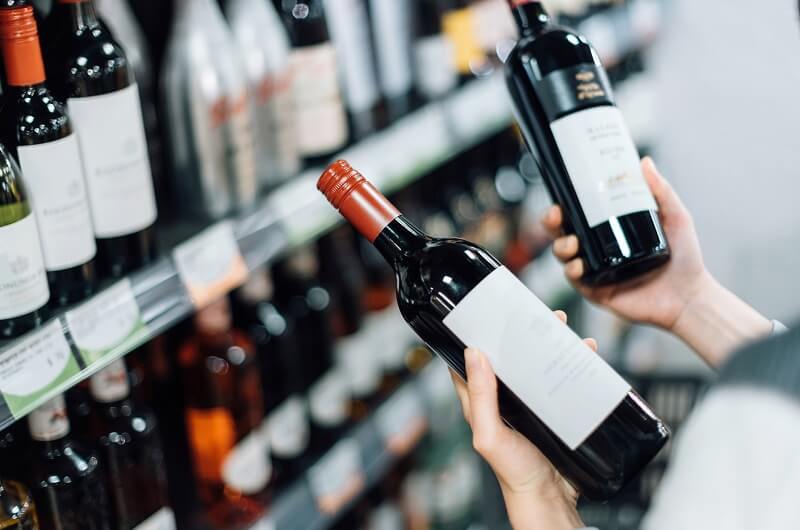Understanding Wine and Calories
When it comes to wine, calories primarily come from two sources: alcohol and sugar. Here’s a quick breakdown:
- Alcohol: This is the major contributor to a wine’s caloric content. A gram of alcohol has about 7 calories.
- Sugar: Wines with higher residual sugar (RS) levels have more calories. A gram of sugar contributes around 4 calories.
High alcohol + high sugar = higher calorie count. Conversely, low alcohol + low sugar = lower calorie count.
Dry vs. Sweet Wines
Generally speaking, dry wines, which have minimal residual sugar, tend to have fewer calories than sweet wines. However, a high-alcohol dry wine might still pack a caloric punch.
The Caloric Breakdown: Red, White, and Rosé
Red Wines
Most standard red wines, like Merlot, Cabernet Sauvignon, and Pinot Noir, contain between 125-175 calories for a 5oz glass. Here are some averages:
- Cabernet Sauvignon: 122 calories
- Merlot: 120 calories
- Pinot Noir: 121 calories
White Wines
White wines, especially the dry ones, usually have fewer calories than reds. Here’s a sneak peek:
- Chardonnay: 118 calories
- Sauvignon Blanc: 119 calories
- Pinot Grigio: 112 calories
Rosé Wines
Rosé wines can vary significantly based on sweetness. A dry Rosé might have as few as 100 calories in a 5oz pour, while a sweeter variant could push closer to 130 calories or more.
Light and Low-Calorie Wine Options
The Rise of Diet Wines
In response to the health-conscious trend, some wineries have started producing wines labeled as ‘light’ or ‘diet’. These wines typically have fewer calories and less alcohol, often between 7-10% alcohol by volume (ABV). It’s essential, however, to check the label to ensure you’re getting a genuinely lower-calorie wine and not just a marketing gimmick.
The Best Low-Calorie Wine Picks
- Skinnygirl: A popular brand that offers a range of wines, including a 100-calorie Pinot Grigio and a 90-calorie Rosé.
- Cense: Crafted in partnership with Weight Watchers, these wines clock in at around 85 calories per 5oz pour.
- FitVine: This brand focuses on producing wines with fewer sugars, carbs, and calories. Their Cabernet Sauvignon, for example, has about 95 calories per 5oz serving.
Beyond the Bottle: Other Factors to Consider
Serving Size Matters
Remember, the calorie count mentioned for most wines is based on a 5oz serving, which is a standard pour. If you’re pouring more generously at home, you’ll want to adjust the caloric intake accordingly.
Pairings Can Add Up
Sure, that glass of wine might be low in calories, but if you’re pairing it with a cheese platter or rich dessert, the calorie count can climb quickly. It’s always a good idea to be mindful of what you’re munching on with your vino.
Listen to Your Palate
While the calorie content is a factor, it shouldn’t be the only reason you choose a wine. It’s always best to find a balance between flavor, enjoyment, and nutritional considerations. After all, wine is meant to be savored!
The World of Sparkling Wines and Calories
Why Choose Sparkling Wine?
Sparkling wine isn’t just for special occasions! It can be a delightful everyday wine, and guess what? Some sparkling wines are surprisingly light on calories.
The Caloric Landscape of Sparkling Wines
Sparkling wines, like Prosecco or Champagne, tend to have fewer calories because they often have lower alcohol content compared to their still counterparts. Moreover, the bubbles can create a feeling of fullness, making you drink slower or less.
Popular Sparkling Wines and Their Caloric Count
Champagne
This iconic bubbly from France can range between 90-100 calories per 5oz glass, depending on the sweetness level. Remember:
- Brut Nature: The driest of the dry and lowest in calories.
- Demi-Sec and Doux: These are on the sweeter side, so they’ll have slightly more calories.
Prosecco
Italy’s answer to Champagne, Prosecco, is fruitier and often lighter. A 5oz pour typically sits at around 80-90 calories, making it one of the lighter wine choices out there.
Cava
Spain’s sparkling gem, Cava, can be compared to Champagne in terms of production but usually comes in with fewer calories, around 85-95 for a 5oz glass.
A Note on Sweetness Levels
Sparkling wines come in various sweetness levels. From Brut to Extra Dry, to Sec, to Demi-Sec and Doux, the sugar content (and thus, calories) can vary. If you’re calorie-conscious, it’s a good idea to familiarize yourself with these terms to make informed choices.
Final Thoughts: Balance and Moderation
At the end of the day, while it’s great to be informed about the caloric content of wines, it’s equally crucial to enjoy them responsibly and in moderation. Whether you’re reaching for a rich red, a crisp white, a refreshing rosé, or a bubbly sparkling wine, remember to savor every sip, enjoy the moment, and raise a toast to good health and great wine!
